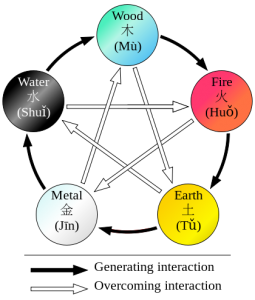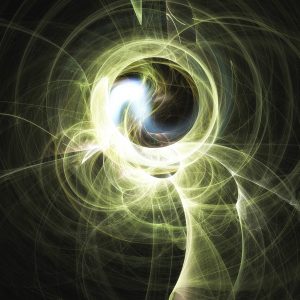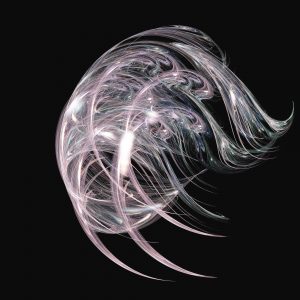Overview of Qi and Blood

Learning more about the theories of Qi and Blood in Chinese Medicine will help you improve your Tai Chi, Qigong, Xing Yi Quan and Northern Shaolin Kung Fu. In traditional Chinese Medicine (TCM) we say that Blood is a Yin substance relative to Qi, which is Yang. Blood is cooling, moistening, and nourishing, whereas Qi is warming, drying and energetic. Qi moves Blood and Blood is the mother of Qi.
To help understand Blood in terms of TCM, let’s look at the three key internal organs and the three associated disharmonies.
Internal Organs
 Spleen (Earth Element) —Transformation and transportation of food and drink, controls the blood. It rules the muscles, manifests on lips and opens to the mouth. The spleen’s No. 1 job is to transform food and drink into pure Qi and Blood, then transport it up to the Heart for circulation throughout the body. The Spleen is also significant for Blood control, helping to keep Blood in the vessels. Bruising easily is a mild symptom, whereas the failure to control the Blood resulting in hemorrhaging is a serious symptom. Poor muscle tone and fatigue, along with pale or dry lips are signs of Spleen Blood disorders.
Spleen (Earth Element) —Transformation and transportation of food and drink, controls the blood. It rules the muscles, manifests on lips and opens to the mouth. The spleen’s No. 1 job is to transform food and drink into pure Qi and Blood, then transport it up to the Heart for circulation throughout the body. The Spleen is also significant for Blood control, helping to keep Blood in the vessels. Bruising easily is a mild symptom, whereas the failure to control the Blood resulting in hemorrhaging is a serious symptom. Poor muscle tone and fatigue, along with pale or dry lips are signs of Spleen Blood disorders.
Liver (Wood Element) —Stores the Blood, regulates flow of Qi, rules tendons, manifests in the nails, opens to the eyes. Qi moves Blood, therefore the Liver plays an important role in normalizing the movement and volume of Blood. This is especially true for women in regulating their menstrual cycles and reproductive activities. Tightness in tendons, brittle nails, and eye weaknesses are all indicative of Liver Blood disorders.
Heart (Fire Element) —Dominates the Blood and vessels, houses the mind, manifests on the face, and opens to the tongue. The Heart Qi is the motive force for blood circulation throughout its network of vessels that nourish (arteries) and remove toxins (veins) from all the organs and tissues of the body. Coldness, weakness, or numbness especially of the hands and feet, along
with a pale complexion and tongue are signs of Heart Blood related disorders, as are insomnia, anxiety, poor memory, and concentration.
Disharmonies of Qi and Blood

Blood Deficiency —Not enough Blood. Often originating in the Spleen’s failure to produce enough Blood (the Spleen rules digestion, which is the process of transforming food and drink into Qi and Blood) due to constitutional weakness in the Spleen Qi and/or poor quality food and drink (amongst other issues), but can come from a loss of Blood or external, pathogens as well. Symptoms include pale face, lips, and tongue, blurred vision or “floaters”, dizziness and lightheadedness, insomnia, palpitations, poor memory and concentration, cold extremities, and a thin pulse.
Blood Stagnation —Blood not moving. Blood will stagnate because of an obstruction in the vessels, a deficiency failing to fill the vessels, and/or sticky blood. Blood stagnation is marked by pain that is sharp or stabbing, in a fixed location and tends to be worse at night when the Qi moves less. Signs include bruising or laceration in the event of an external trauma, as well as varicose or “spider” veins through the course of prolonged but mild Blood stagnation. The tongue may be purple and pulse choppy, and women may experience painful menstruation and clotting. Blood stagnation can also lead to more serious and deadly ailments such as thrombosis, stroke, and heart attack.
Blood Heat —Overheating. Too much heat in the Blood can come from internal sources such as extreme emotions (anger) as well as pathogens such as rheumatic fever. Symptoms include mental restlessness and even mania; raised, red skin rashes; nosebleeds; coughing up blood; blood in the urine; profuse menstrual flow in women; rapid pulse; and red tongue.

It is important to remember that our body is interconnected. Imbalances in one area will affect
others and may grow larger over time. For example, prolonged or severe Blood Deficiency creates a weak flow, which then results in Blood stagnation. The pressure and friction of accumulated blood because of Blood Stagnation will produce Heat in the Blood. Also contributing to Blood Heat is a failure of the nutritive effects of Blood (Yin) to balance the warming and moving effects of Qi (Yang). Prolonged Blood Heat leads to stagnation as the body fluids are burned off because of the excess heat and the blood becomes more sticky.
So what can you do to take better care of your blood? In addition to following simple dietary and lifestyle guidelines, a licensed acupuncturist (who is also trained in Chinese herbs) can help to diagnose and treat blood related disorders with acupuncture, herbs, or a combination of the two.
About the Author:
Adam Shapiro is a Certified Professional Coach with a Master Degree in Traditional Chinese Medicine. He is also a bodyworker practicing Tui Na, Acupresure, and Cranial-Sacral therapies and is an intuitive guide/ counselor/ coach. Combining his passion for the Internal Arts of Tai Chi and Qi Gong, with a love of people, deep sense of purpose, and skillful prose, Adam’s parallel interests come together in what he calls, “Occupational Tai Chi” where the aim is to, “turn adversity in advantage”. Adam works 1-1 with individuals on their health, relationships, businesses and careers via phone, skype and in-person meetings. Learn more about Adam
Our Tai Chi and Qigong online course is in pre-production!
10,000 Victories School
Our School can be found here!
Learn more about Tai Chi at the 10,000 Victories webpage here!
Learn more about Xing Yi at the 10,000 Victories webpage here!
Learn more about Northern Shaolin at the 10,000 Victories webpage here!
Learn more about Qi Gong at the 10,000 Victories webpage here!
Learn more about Animal Power Kung Fu Classes at the 10,000 Victories webpage here!
Listen to the Ancient Wisdom, Modern Health Podcast here!
Watch great videos at our Vimeo and Youtube pages!
Visit our Facebook page here!
Sign up for our weekly newsletter with more great articles, photos and videos here!

